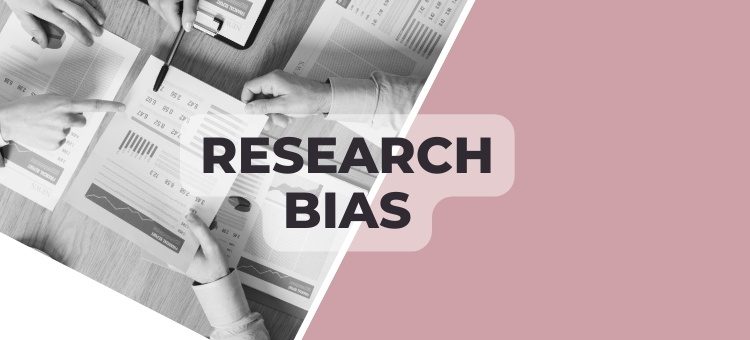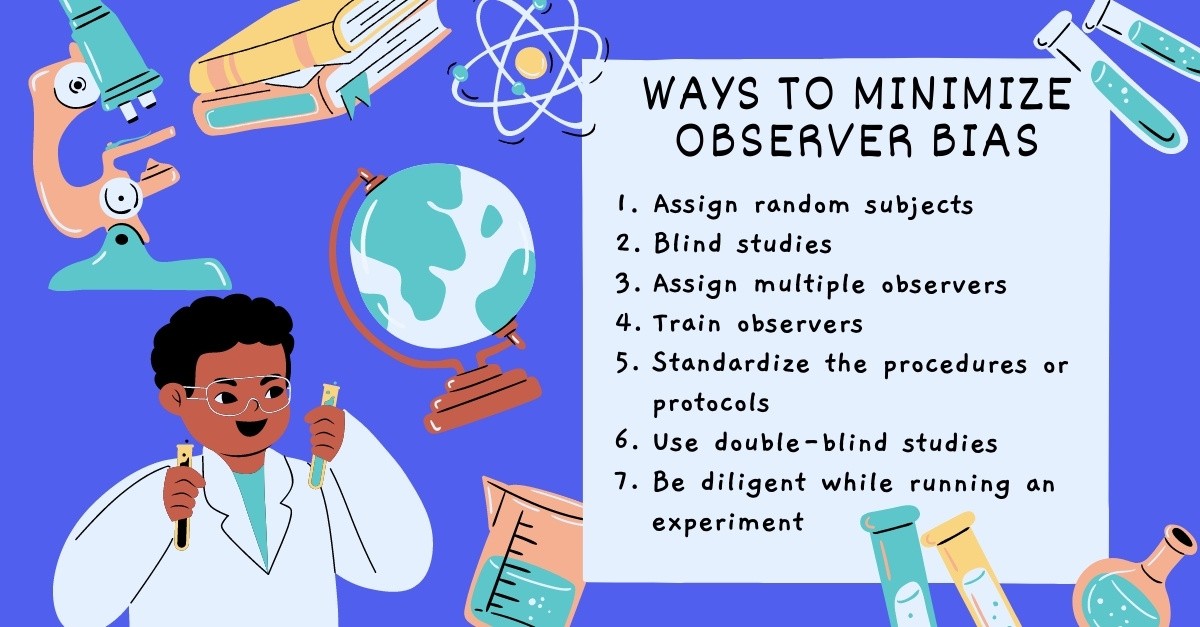Observer Bias in Research

R1 – “I am telling you, the result will be this.”
R2 – “How can you be so sure?”
R1 – “See, from the observation, I feel results will be in favor of my assumption.”
R2 – “So, all this is based on your feeling?”
R1 – “Oh yes, I am so sure that I can predict the result!”
R2 – “You are biased!
The whole point of an observational study is to keep it unbiased, what if you unintentionally tweak the experiment to get the desirable result?”
This discussion between two researchers talks about how observer bias could alter the results and inferences in a research. Often, researchers are unaware or get swayed by their expectations and assumption in research. Although it appears as a trivial issue, observer bias could impact research study and deviate the results to a great extent from the original expectations.
What Is Observer Bias?
Observer bias is defined as a researcher’s expectation about their research study. To be more precise, it is a type of bias that occurs when the person has personal judgement or perspective that affects their ability to reach or discuss an impartial conclusion.
Research bias is a problem in research studies wherein the information collected is affected by the fact that the researcher has expectations about what is going to happen. For example, if a researcher is trying to find out a particular result, and have an incentive to produce data that confirms predication.
What Is Observation Research?
In observational research, one often records behavior or take measurements from the experiment without trying to influence the outcome of the experiment. Furthermore, many research fields use observational studies, such as medicine, psychology, behavioral science, and ethnography.
Impact of Observer Bias on Research
This type of bias can result in misleading information. Moreover, it can affect the data collection and the acquired results can fail to accurately represent what exists in reality because the results were interpreted under researcher’s bias and prejudice.
In fact, this type of bias not only leads to inaccurate data sets, but also can be damaging to scientific research and policy decisions. Additionally, the presence of bias in your study can cause negative outcomes for people involved in the research study. Furthermore, it can lead to misinterpretation of their behavior and biased treatment from the researchers.
Types of Observer Bias
There are different types of research bias which are closely related to observer bias.
Observer-expectancy Effect
This effect occurs when the researcher unconsciously treats same experiment differently with different subjects, leading to unequal results within an experiment. Furthermore, observer-expectancy effect occurs when the research deliberately treats the experiment differently because their assumed hypothesis and want to test it.
Moreover, it could also happen when a researcher influences the subjects/participants of the experiment into believing their assumed hypothesis.
Actor-observer Effect
This phenomenon occurs wherein the researcher attributes the actions to external factor. So, the actor here is the person who is performing the behavior — a subject in the research or an outcome of an experiment. Furthermore, the observer is the one watching/observing the subject or the outcome of experiment — a researcher. Finally, the attribution refers to what the researcher thinks caused the outcome.
This bias explains why we, as researchers, blame situation for the outcome of experiments when we would not blame ourselves for conditioning our thoughts in the desired way.
Hawthorne Effect
This is a type of bias that occurs in a research wherein the behavior of the subject changes because they are under observation. During 1920s and 1930s, Western Electric Company’s Hawthorne Works factory in Cicero, Illinois conducted series of experiments.
Experimenter Bias
This bias includes all types of biases from researchers that may influence their studies. It includes observer bias, observer expectancy effects, actor-observer bias, and other biases. Before you begin a research study, you may have already formulated an idea of what the results will be. This is where you are setting yourself up for being biased.
When you have a predetermined idea of the results and conduct a study to test your theory, if you don’t get the exact results that confirm your theory, then you may want to twist the results to make them more in line with your predictions.
Ways to Minimize Observer Bias

There are several ways to minimize observer bias in research studies. The ways in which you could minimize the bias include:
- Assigning random subjects to each subject group in a research, instead of choosing your subjects personally.
- Blind Studies will help you make sure that your participants and observers are unaware about the aims of research. This can eliminate some research expectations you have from knowing the study purpose.
- With multiple observers, you can make sure that the data is consistent and unlikely to be skewed by single observer’s biases.
- Train observers to make sure everyone performs experiments (collects and records data) in exactly the same way. It is important to calibrate your methods so that there’s very little or no variation in how different observers report the same observation.
- Standardize the procedures or protocols that are structured and easy to understand for all observers. Record these procedures so that one can refer back to them at any point in the research process.
- Use double-blind experiments where neither you nor your subjects know which treatments are being used in the research study.
- Be diligent while running an experiment on whether all the factors are taken into consideration during the study.
Observer Bias Examples
Example 1
You’re examining the effects of a new painkiller for headache. You run an experiment with two groups:
Group A receives the actual treatment with the new painkiller
Group B receives no treatment, but instead takes a placebo
The participants don’t know whether they’re part of Group A or B, but you do. Unconsciously, you treat the two groups differently while conducting a survey about their level of headache. You treat Group B as if you expect the participants to still be in pain and frame your questions more negatively than for Group A.
Example 2
Let us consider a study that attempts to show that taking a certain vitamin increases concentration levels in participants. If the researchers expect to find that result, they might be more likely to encourage participants who are taking the vitamin to talk about how much better they’re doing on their tests or point out that they seem more alert and focused.
In this way, their expectations can affect the results of the study allowing them to “prove” something that wasn’t true in the first place.
Conclusion
Observer bias can affect your research study and therefore, you must try and minimize it. Make sure your observations are as consistent as possible and do not alter when subjected to change in observer/researcher. Also, be careful not to allow your personal feelings about the experiment affect the results.
Have you ever faced this dilemma of bias in your research? How did you deal with it? Do write to us or comment below and tell us about your experience.









![What is Academic Integrity and How to Uphold it [FREE CHECKLIST]](https://www.enago.com/academy/wp-content/uploads/2024/05/FeatureImages-73.png)